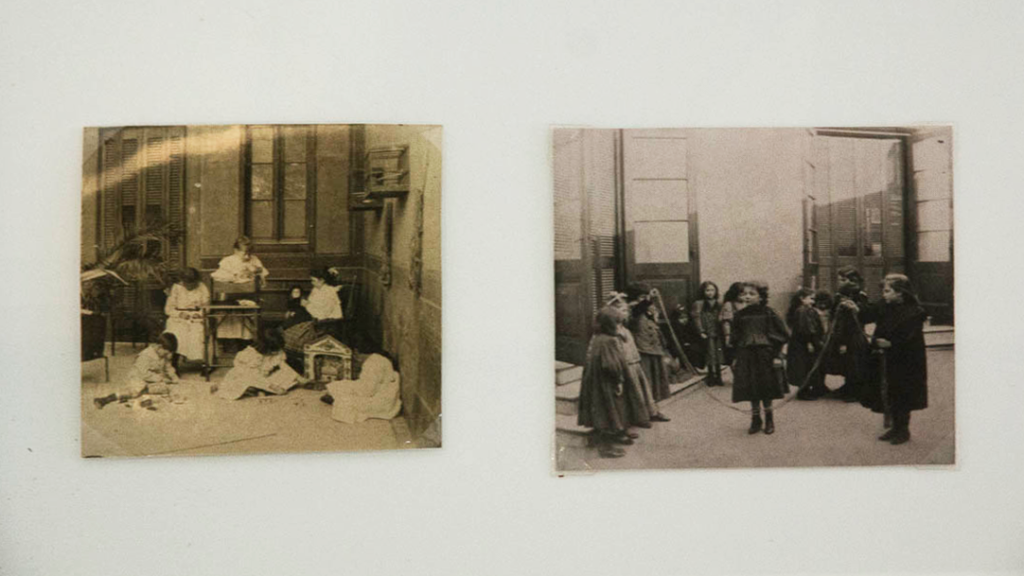by Stefanía Cardonetti
When we explore the life trajectories of people at the Buenos Aires Museum of Immigration, we often imagine the journey, arrival and integration of adults who, for different motivations and circumstances, chose to settle in Argentina. However, among the millions of adults who arrived, hundreds of thousands of children also came. In the extensive collections of photographs that the museum exhibits to illustrate the diversity of experiences that came with immigration, we can find images of boys and girls who forged their own paths in local society.

Children Playing
Source: Photograph by the author Stefanía Cardonetti
This photograph shows a group of children playing, which was one of the most prominent forms of integration. Play became a common language that allowed children to begin to understand children of different backgrounds. If we locate ourselves in the urban environment and imagine the widespread tenement housing so ubiquitous among working-class immigrants, a courtyard or the street became the crucial space for children’s sociability. Tenements had small rooms where space was extremely limited.
Like adults, children could also suffer from uprooting and long to return to their homeland. Even by the time they reached adulthood and had high rates of integration into Argentine society, these former child migrants continued to find connections between two worlds. In most cases, these small migrants were raised in spaces that were culturally very different from each other. On the one hand, in the private sphere, parents encouraged the cultural traditions of the country of origin – language, food, religion – and when possible they sent them to private bilingual schools.
Argentine public education, from its beginnings, had as one of its main goals to impose a sense of national identity. It is not difficult to imagine that immigrant children who attended (far more went to public schools than private ones) felt conflicted in the midst of this complex socialization. However, schools also played a role in integrating children through daily experiences and rituals in the classroom.
Despite a sense of uprooting, scholars of migration who focus on childhood have also shown that many children had happy childhoods despite the complex life that migration brings. Through interviews with adults who were immigrants as children, some stated that the new food of Argentina was one thing they found particularly appealing. For example, one child remembered a feeling of amazement when trying Argentine pizza and sweets. Such experiences, particularly impactful for children, persuaded them that settling in in the new country was not so bad.
Even though children could not influence the decision to emigrate, mobility was a family project that in many cases included them. Like their parents, children also experienced the economic hardships that led to emigration. Many suffered the traumatic consequences of war and brought with them bitter memories of violence. They also missed flavors, aromas and people who remained in the country of origin. Yet beyond those feelings, today we know that the migrant children settled in in Argentina and learned, like their parents, to live between two worlds, between the country they left and the one that adopted them.
Further Reading
María Bjerg. El viaje de los niños. Inmigración, infancia y memoria en la Argentina de la segunda posguerra. Editorial Edhasa, 2012.
Claudia Freindenraij. La niñez desviada. La tutela estatal de niños pobres, huérfanos y delincuentes. Buenos Aires 1890-1919. Editorial Biblos, 2020.

